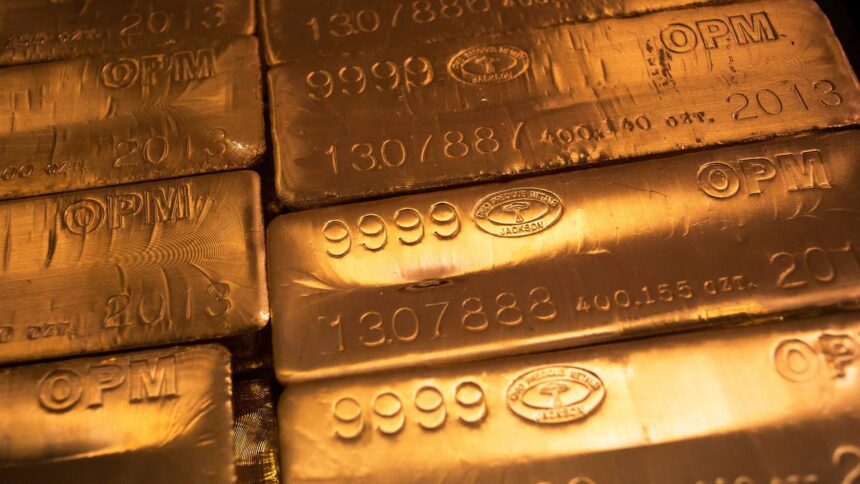Investors are advised to consider any steep drop in gold prices as an opportunity for accumulation, as indicated by a recent report from Jefferies. The report noted a significant surge in gold, which has risen by 53.9% year to date, following a 27.2% gain in the previous year. Concurrently, the unhedged gold-mining index has experienced a remarkable increase of 131.8% year to date, compared to a mere 13.3% growth last year.
Jefferies acknowledged that the rapid ascent in both gold and mining stocks, along with heightened media attention on the precious metal, naturally raises the probability of a near-term correction. Nevertheless, the firm maintains a positive long-term outlook, recommending that investors capitalize on declines in prices. They stated, “The near vertical ascent in both gold and gold mining stocks, and the current media chatter, naturally raises correction risks. Investors should view any sharp correction as an opportunity to accumulate.”
Gold prices surpassed $4,000 per ounce on Thursday, achieving another milestone in the ongoing rally. Historically, gold’s performance in U.S. dollar terms has shown an inverse relationship with real interest rates. However, the report pointed out that this correlation has weakened considerably following unprecedented levels of central bank gold purchases since the third quarter of 2022. This surge in central bank buying appears to have been a reaction to the U.S. decision in late February 2022 to freeze Russia’s foreign exchange reserves. Since then, global central banks have acquired record quantities of gold—1,080 tonnes in 2022, 1,051 tonnes in 2023, 1,089 tonnes in 2024, and 415 tonnes in the first half of 2025.
Jefferies indicated that there is no indication of this central bank buying trend coming to an end. The firm reaffirmed its long-term bullish stance on gold bullion, adjusting the price target to $6,600 per ounce. This target was determined by comparing the peak gold price of $850 per ounce in January 1980 with the rise in U.S. nominal personal disposable income per capita since that time. In 1980, the gold price constituted 9.9% of U.S. disposable income per capita, which was $8,551. As of August, the gold price registered at $4,040 per ounce, or 6.0% of U.S. disposable income per capita of $67,240.
To achieve the same ratio of 9.9%, gold would need to increase to $6,684 per ounce, according to Jefferies. The report concludes that the anticipated U.S. dollar debasement supports a long-term bullish perspective on gold.
Published on October 10, 2025.










